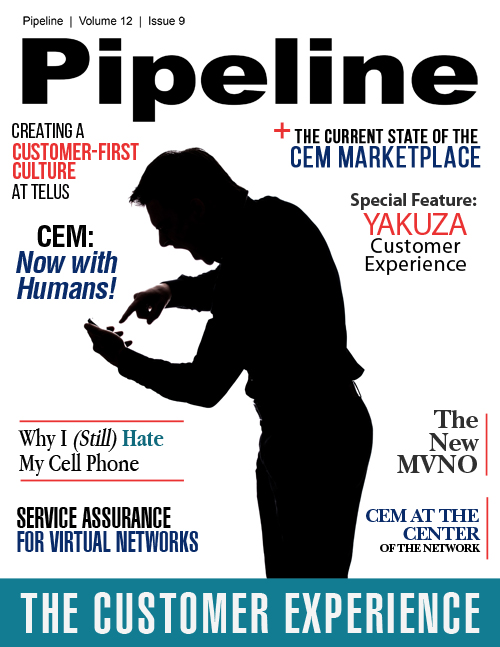The Current State of the CEM Market
Quantifying CEM
One measure of customer experience is the NPS® (Net Promoter Score), and there’s no doubt that countless companies—including CSPs—have become keenly aware of how they are faring in this measure of the proportion of so-called detractors that a particular company has as compared to how many promoters the company has. It’s a tough but fair standard, as a single bad experience can flip a promoter to a detractor.
It’s also a measure that stymies many a thoughtful consumer, by the way. I recently had my car serviced and the technician said "you may receive an email or phone survey. They’ll ask you to rate the service you received on a scale of 1-10, and we consider anything less than a 10 a failing grade.” Kudos to the service department for priming its staff to enlist their customers as allies in an internal war, but we live in a weird world when anything less than a 10 (or a 9, for that matter) is essentially considered a failure. And sure, that’s a bit of a digression, but that one conversation with my mechanic made me realize that I have been ruining NPS numbers and other similar scores for years by being honest and reserving top ratings for truly exceptional experiences. I wonder how many other consumers do the same?
But my reservations notwithstanding, NPS is considered a solid measure of customer sentiment, if not a complete picture. It’s very high level, and doesn’t give you a concrete idea of how to make things better.
Neil Lilley, Product Marketing Director for OSS at Ericsson, echoes that sentiment in a recent blog post, saying “…as good a tool as NPS is, it doesn’t really provide a 360-degree view of customer satisfaction or sufficient data that operators need to make the right service improvements in a timely manner.” NPS is limited, he says, for several key reasons. It is based on small sample sizes and doesn’t identify which specific customers need attention. What’s more, “it cannot identify the root cause of the customer’s dissatisfaction or what sort of offer/corrective action is needed.”
Fortunately, NPS is just one measure that gives a high level view of how you’re doing, in terms of the customer experience. There are dozens, if not hundreds, of other KPIs that can help give you more answers, depending on the questions you’re interested in addressing.
Oracle’s Jeff Greibeler wrote a white paper last year that does a good job of enumerating quite a few of the most relevant KPIs for understanding the customer experience. NPS is in there, but so are many others, including churn rate, customer satisfaction (CSAT), customer effort score (CES), average resolution time, service uptime, cost of acquisition (COA), first contact resolution (FCR), and lots more that can be determined through robust metrics on the provider’s side or comprehensive survey data.
So there’s lots to measure. The question for CSPs is which metrics matter most and what tools can help them gauge those metrics and work to improve those areas. And why choose just one? Capable solutions can track all of these and more and give you as much data as you need to choose the right path to a better customer experience.
And then they can help you get there. Whether it’s enhancing customer self-serve or helping you understand the pricing and promotion models that your customers best respond to, there are lots of tools to help you out.
The CEM Landscape
Here’s a look at some of the solutions available, in no particular order:
Comptel
Comptel’s CEM solution is nested within its real-time decisioning (RTD) logic engine “softblade,” rightly positioning customer experience data as a part of a larger whole. You can get a robust view of the customer experience complete with real-time data, and then have automated, contextually appropriate offers ready to respond immediately to specific customer behavior. The system can also make recommendations, offers and actions to the campaign management system, customer care group, service fulfillment group, or directly to the customer.


















